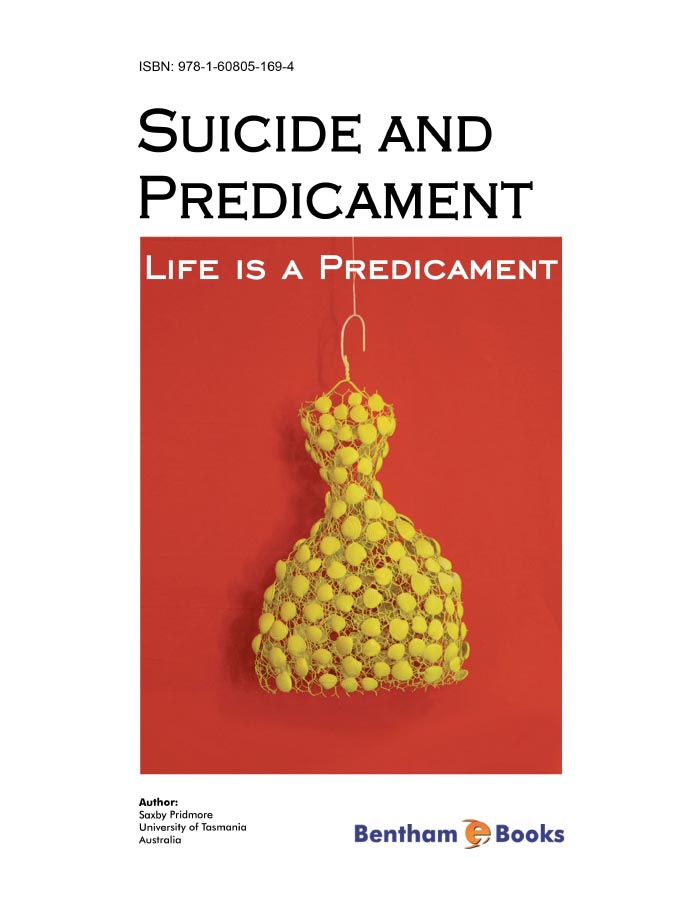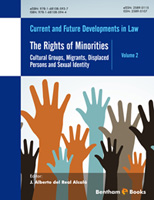“If you are going from A to B you do not necessarily go in a straight line.”
Margaret Thatcher (1980)
Current medical and psychological wisdom holds that all (Ernst et al.., 2004), or almost all (Bertolote et al., 2004) those who complete suicide, do so in response to a mental disorder. This book is opposed to that notion.
A typical example of contemporary advice comes from the well intentioned website (TeensHealth, 2009):
“Most teens interviewed after making a suicide attempt say that they did it because they were trying to escape from a situation that seemed impossible to deal with… And at that particular moment dying seemed like the only way out.”
An entirely reasonable statement.
“Some people who end their lives or attempt suicide might be trying to escape feelings of rejection, hurt, or loss. Others might be angry, ashamed, or guilty about something.”
Again, an entirely reasonable statement.
“What makes a person unable to see another way out of a bad situation besides ending his or her life?... The answer to those questions lies in the fact that most people who commit suicide have depression.”
This last sentence expresses a notion to which this book is opposed.
There is no doubt that these authors are describing a mental disorder. Under the heading of ‘depression’ they write about “hormones” and “bipolar disorder”. Then comes:
“They are unaware that it is the depression – not the situation – that’s influencing them to see things in a ‘there’s no way out’…kind of way.”
Again, a notion to which this book is opposed; sure, a mental disorder may be present, in which case, it will be argued that the mental disorder is “the situation”.
People with mental disorder are at greater risk of suicide than those without mental disorder. But it is a leap of faith, a distortion of logic, to therefore contend that therefore, all those who complete suicide have a mental disorder. This leap of faith is assisted by the WHO definition of health: “a state of complete physical, mental and social well-being”. There can be little doubt that people who suicide are distressed and are therefore not in a state of “complete…well-being”. However, an occasional measure of distress is part of the normal human experience, and to label this a mental disorder is to medicalize “the human condition”.
A ‘scientific’ mantle for the view that suicide is exclusively the result of mental disorder comes from the practice of retrospective “psychological autopsy”. In this book, space is given to the ignored opinion that this process is methodologically flawed.
To demonstrate that suicide can occur in the absence of mental disorder, case studies have been examined. Cases have been chosen from the public record, so that individual privacy is not offended, and the reader can obtain further details if not convinced. Suicide has troubled every nation, every political system and every religious group of the last three millennia. 138 cases are detailed, of whom 14 suffered, or may have suffered, a mental disorder.
But more can be gained from this public record material. As all behavior is motivated, we can ask, what motivated these people without mental disorder to complete suicide? It is proposed that individuals suicide when they find themselves in predicaments (unacceptable situations from which there are limited escape options). These include the loss of honour of the defeated military leader, the shame of the prosecuted paedophile, the avoidance of pain and indignity of the terminally ill person, and the mixture of negative emotions of the bankrupt former billionaire.
A “predicament model of suicide” is presented which allows the incorporation into a single model, of the majority of what is known about the etiology of suicide. The essential element is that suicide results when the individual is in a “predicament”. A unique notion here is that mental disorder (or more precisely, the distress experienced as a result of a mental disorder) can be usefully cast as a form of (internal) predicament. Mental disorder predicament is construed as comparable to the distress which can result from environmental factors. A combination of these two is, of course, common.
The term “predicament model” has been used to draw attention to the importance of the stimulus. This is not to deny the importance of individual vulnerability. Individual vulnerability, in the medical model context, depends on genetics and life experiences. Individual vulnerability, in the sociological context, is also important, and refers to individuals who are insufficiently integrated into, or regulated by, society.
The sociology of suicide is celebrated. The mistaken idea that Durkheim found no place of psychopathology in suicide is laid to rest. The stories of the suicides of influential individuals have been transmitted through painting, sculpture, literature and music such that western culture now has a tradition of suicide as an escape option when trapped in a predicament. Suicide rates are discussed.
“A typology of suicide” is presented, based in the notion of predicaments and the observations of others. Four types of suicide are offered, into which all suicide can be categorized.
“Medicalization” is the process by which non-medical problems are re-classified as medical problems. By this process normal distress and disappointment have become synonymous with mood disorder. It is agued here, that suicide has also become medicalized, making prevention the responsibility of health professions (who have relatively little to offer in the absence of mental disorder). Further, this approach leaves without a role, the community and politicians, who have the ability to modify the values and behavior of society.
A “pathway model of suicide” is presented in which distress is the central element. This distress has three possible outcomes: it can 1) be “medicalized” (incorrectly called a mental disorder) and when suicide occurs this is (incorrectly) identified as a death attributable to mental disorder, 2) result in a mental disorder and suicide may follow as a consequence of the mental disorder, and 3) lead directly to suicide as a means of avoiding distress (egoistic/anomic or simple reaction).
The wisdom that all or almost all suicide is the result of mental disorder has spawned the prevailing suicide prevention strategy: the “high risk approach”, which focuses on identifying and treating people with mental disorder. This approach has failed to have an impact on national suicide rates anywhere in the world. This comes as no surprise, when we consider the evidence that, 1) suicide often occurs in the absence of mental disorder, and 2) treatment has never been proven to reduce the suicide risk for an individual or a group of individuals. This book provides a broader approach to suicide prevention, which will take a long time and involve cultural changes.
We have an ethical obligation to provide all possible care to people suffering mental disorder, but this is not going to reduce the suicide rate. A “population-based approach” to prevention attempts not to treat distress in particular individuals, but to reduce features of the society which underpin distress and dissatisfaction (such as unemployment, poor education and housing, and alcohol abuse). As cultural factors have a profound effect on suicidal behavior, to reduce the suicide rate, it will be necessary to change our culture (responses). Whether this is desirable and how it may be achieved will be matters for discussion. For example, shame lies at the root of a proportion of completed suicide and whether our culture can be reorganized to eradicate this emotion is yet to be determined. A prevention strategy is recommended which incorporates features from both the “high risk” and the “population based approaches”.
Should we decide to a population based approach, regular attention to annual suicide rates will do more harm than good. The person trying to lose weight who looks at the scales every day courts frustration (which increases the desire to eat); the society which is trying to reduce suicide by reshaping itself must embrace a long term project and will not benefit from slavish attention to annual suicide statistics.
Medical treatment is expensive and stigmatizing. Where suicidal thinking and behavior are not associated with mental disorder, the involvement of non-medical support people is recommended.
Finally, if we want to improve the satisfaction rating of a TV show, we don’t identify dissatisfied looking people and give them smiling classes and amphetamines, we improve the quality of the show.
Saxby Pridmore
University of Tasmania
and
Royal Hobart Hospital Australia





